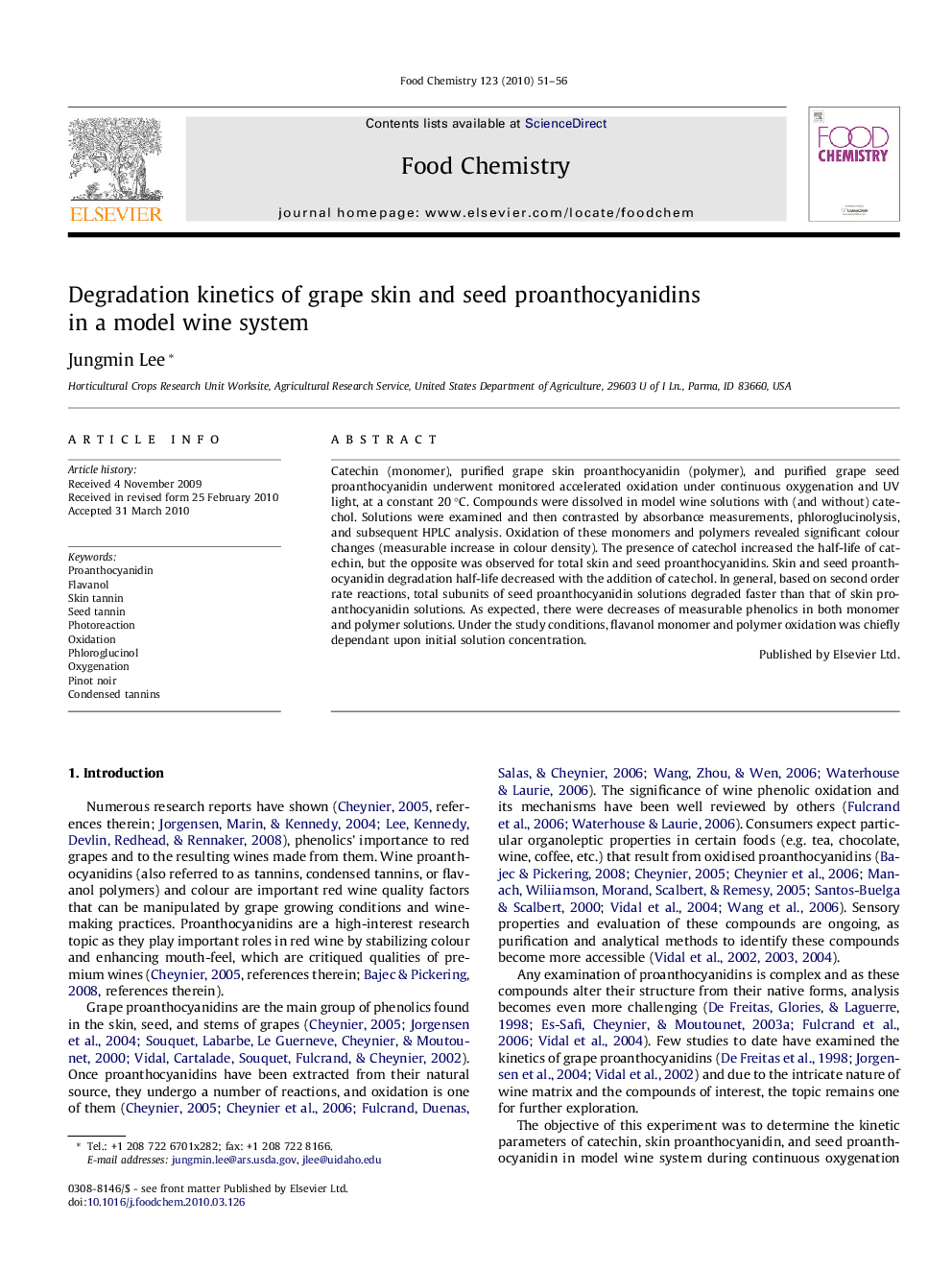| Article ID | Journal | Published Year | Pages | File Type |
|---|---|---|---|---|
| 1184996 | Food Chemistry | 2010 | 6 Pages |
Catechin (monomer), purified grape skin proanthocyanidin (polymer), and purified grape seed proanthocyanidin underwent monitored accelerated oxidation under continuous oxygenation and UV light, at a constant 20 °C. Compounds were dissolved in model wine solutions with (and without) catechol. Solutions were examined and then contrasted by absorbance measurements, phloroglucinolysis, and subsequent HPLC analysis. Oxidation of these monomers and polymers revealed significant colour changes (measurable increase in colour density). The presence of catechol increased the half-life of catechin, but the opposite was observed for total skin and seed proanthocyanidins. Skin and seed proanthocyanidin degradation half-life decreased with the addition of catechol. In general, based on second order rate reactions, total subunits of seed proanthocyanidin solutions degraded faster than that of skin proanthocyanidin solutions. As expected, there were decreases of measurable phenolics in both monomer and polymer solutions. Under the study conditions, flavanol monomer and polymer oxidation was chiefly dependant upon initial solution concentration.
